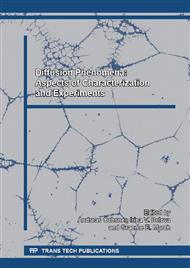p.42
p.52
p.60
p.68
p.77
p.86
p.96
p.103
p.110
Mass Transfer Behaviour in Hybrid Solvent Oil Recovery Processes
Abstract:
The mechanisms of mass transfer in thermal solvent enhanced oil recovery processes and the influence of grid size in the numerical simulation of these processes is not well understood [1, 2]. The literature has indicated that, experimentally, solvent fronts progress more rapidly that what can be predicted using current approximations [3]. It has also been shown that under certain modelling conditions with coarser grid meshes, the influence of numerical errors can be substantial. The equations that govern thermal/solvent multiphase flow through porous media are extremely complex and it is very difficult to decouple the contribution of the mass transfer mechanisms from the thermal effects. This paper was written to increase the understanding of the mass transfer mechanisms in hybrid thermal solvent recovery processes through sensitivity study using a numerical solution of the linear one dimensional advection diffusion/dispersion (ADD) equation. This equation was modeled using finite difference methods. The effects of grid size were examined to verify the use of this method, and the results were then used to examine the sensitivity of the equation to the parameters that govern the mass transfer mechanisms (advection velocity, diffusion and dispersion coefficients).In particular, a range of values for diffusion and dispersion coefficients were selected for the sensitivity study, and one advection velocity. These values were then used to numerically solve the ADD equation to assess the impact of each mechanism (advection, diffusion and dispersion) and their contribution to the movement of the solvent front. The parameters chosen for this study were based on values obtained from the literature for advection velocity, diffusion and dispersion coefficients consistent with a gravity drainage thermal/solvent oil recovery process. This sensitivity study has indicated that all three mechanisms (advection, diffusion and dispersion) must be included to have the solvent front progress at rates that are consistent with experimental solvent front advance rates published in the literature to date [1]. This result suggests that diffusion alone cannot account for the movement of the solvent front within the ranges of values that have been studied.
Info:
Periodical:
Pages:
77-85
Citation:
Online since:
April 2016
Authors:
Price:
Сopyright:
© 2016 Trans Tech Publications Ltd. All Rights Reserved
Share:
Citation:


